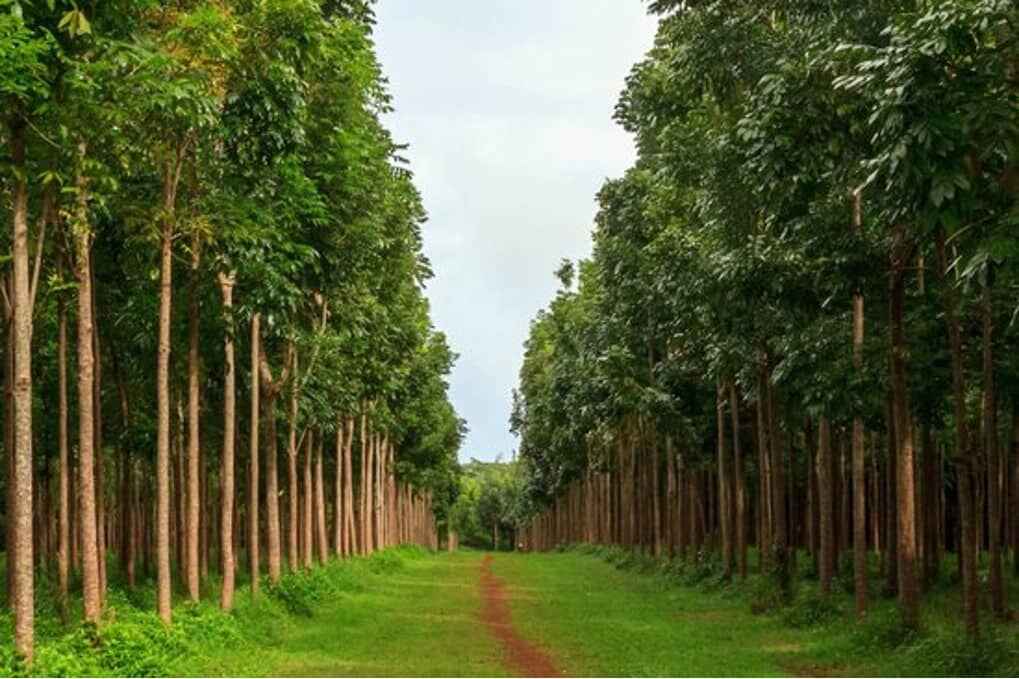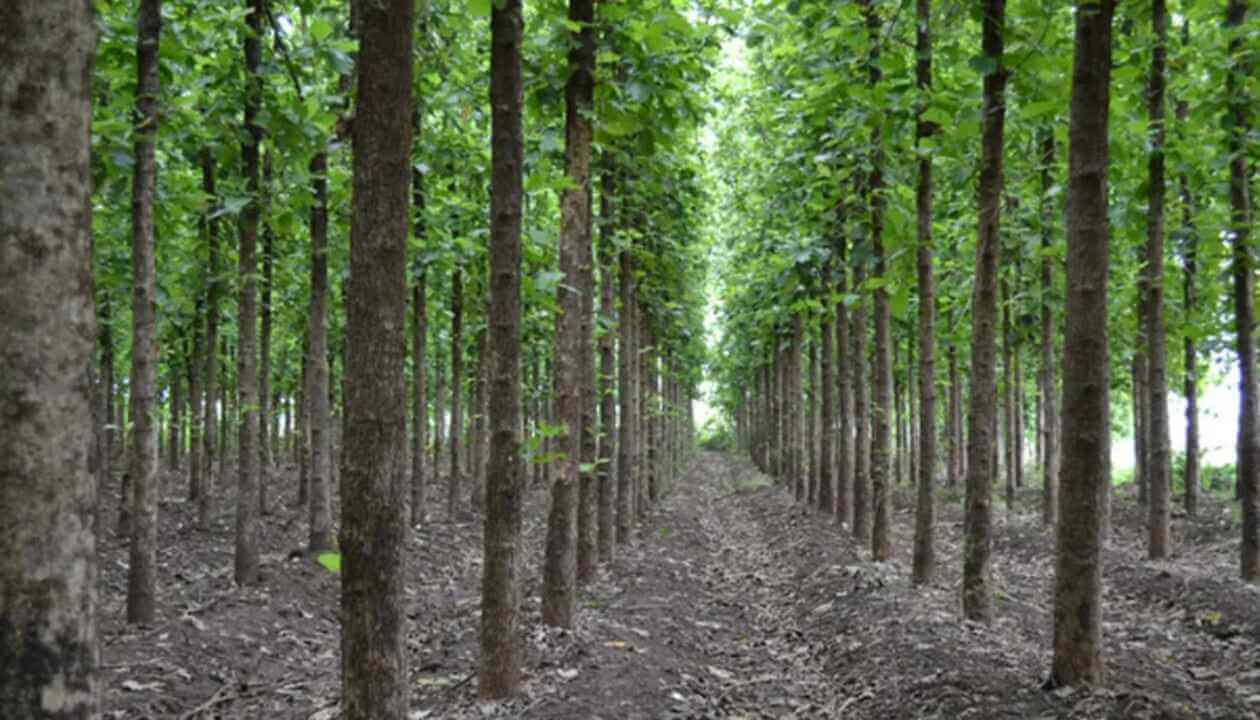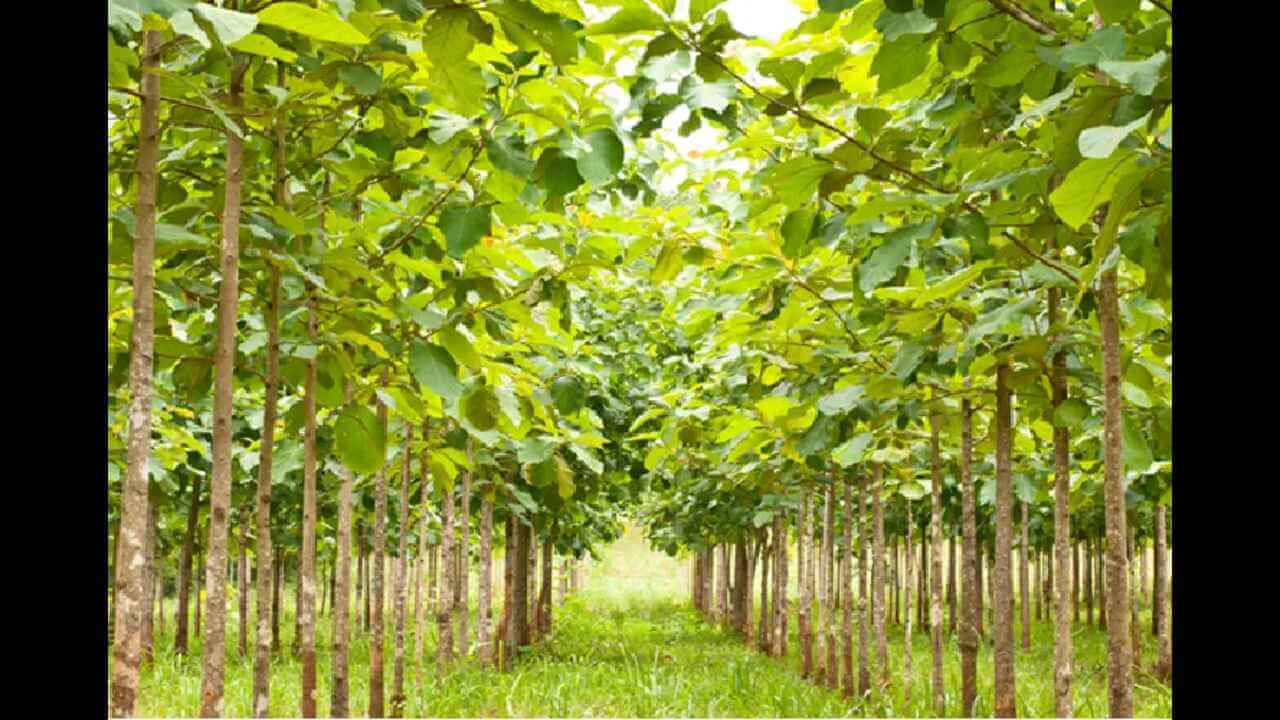Mahogany Tree Plantation: Guide for Sustainable Source of Income

Introduction to Mahogany Trees
Mahogany is a tropical hardwood that has been prized for centuries for its beauty and durability. The wood is typically used in high-end furniture and musical instruments, but it can also be used for construction, flooring, and other applications.
There are several different species of mahogany, but the two most popular are Swietenia mahagoni and Swietenia macrophylla. Mahogany trees can grow to be 100 feet tall or more, with a trunk diameter of up to 4 feet. The trees have large, dark green leaves and produce small white flowers.
Mahogany trees are native to Central and South America, but they have been introduced to other parts of the world, including Africa, Southeast Asia, and the Caribbean. In many countries, mahogany is now an important part of the forestry industry.
Mahogany trees are relatively easy to grow and can be very profitable for farmers. The wood is in high demand, and the trees can be harvested every 20-30 years. A well-managed mahogany plantation can provide a sustainable source of income for generations to come.
Planting Mahogany Trees
Mahogany trees are a great source of income for farmers. They are easy to grow and provide a sustainable source of income. Here is a guide to planting trees:
1. Choose a location that receives full sun and has well-drained soil.
2. Prepare the planting area by removing all weeds and grasses.
3. Dig a hole that is twice the width of the tree’s root ball and just as deep.
4. Place the tree in the hole and backfill with soil, tamping it down as you go.
5. Water the tree deeply after planting.
6. Fertilize the tree yearly during the growing season with a balanced fertilizer.
7. Prune annually to shape the tree and encourage new growth
How to plant and care for a mahogany tree plantation
Assuming you have the land and climate to support a mahogany tree plantation, there are a few key considerations for planting and caring for your trees to ensure a successful, sustainable crop.
First, it’s important to choose the right species of mahogany for your area. There are many different types of mahogany, so be sure to do your research and select the one that will thrive in your regional conditions.
Next, you’ll need to clear and prepare the land where you’ll be planting your trees. This includes removing any existing vegetation, tilling the soil, and establishing irrigation if necessary. Once the land is ready, you can begin planting your trees.
When it comes to spacing and placement, be sure to follow the recommended guidelines for your particular species of mahogany. Generally speaking, you’ll want to plant each tree about 20 feet apart in rows that are at least 10 feet apart. This will give each tree plenty of room to grow and ensure good air circulation throughout the plantation.
Once your trees are in the ground, they’ll need regular care and attention to ensure they stay healthy and continue growing strong. This includes watering (especially during dry periods), fertilizing (mahoganies are heavy feeders), pruning dead or damaged branches, and controlling pests and diseases.
With proper care, a mahogany tree plantation can be a highly productive and profitable venture. Not only will you be able to harvest high-
Where do mahogany trees grow best?
Mahogany trees grow best in tropical climates with high rainfall and humidity. They are native to Central and South America, but can also be found in Africa, Southeast Asia, and the Caribbean. Mahogany trees need well-drained soil that is rich in organic matter. They are relatively tolerant of poor soils, but prefer soils that are high in nutrients. Mahogany trees are fast-growing and can reach heights of up to 100 feet (30 meters).
The benefits of growing mahogany trees
Mahogany trees are an excellent source of income for farmers. They provide a renewable source of lumber that can be used for a variety of purposes, including construction, furniture making, and other woodworking projects. trees are also relatively easy to grow and care for, making them a low-maintenance crop for farmers.
In addition to providing farmers with a steady income, mahogany trees also offer a number of environmental benefits. They help to improve soil quality and prevent erosion, and their large leaves provide shade and help to regulate temperature and humidity levels in the surrounding area. Mahogany trees also support local wildlife, providing homes and food for birds, insects, and other animals.
Overall, mahogany trees are a valuable asset to any farm. They offer a sustainable source of income while also helping to improve the environment.
The challenges of growing mahogany trees
Mahogany trees are slow-growing, which can make them a challenge to grow for commercial purposes. They can take up to 30 years to reach maturity, so farmers need to be patient when growing mahogany trees.
Another challenge of growing mahogany trees is that they are susceptible to pests and diseases. Farmers need to be vigilant in monitoring their trees for signs of infestation or disease, and take action quickly if any problems arise.
Finally, this trees require a lot of water and nutrients to thrive. Farmers need to be sure to provide their trees with plenty of water and fertilize them regularly in order to produce healthy, high-quality wood.
Harvesting Mahogany Trees
Harvesting mahogany trees is a process that needs to be carefully planned and executed. The first step is to determine the number of trees that can be harvested without causing long-term damage to the forest. This information is available from the Department of Forestry or your local extension office. Once the number of trees to be harvested has been determined, you need to create a harvest plan. This plan should include when and where the trees will be cut, how they will be transported, and what will be done with the lumber once it has been cut.
After the harvest plan has been created, you need to select the right equipment for the job. You will need a sawmill to cut the lumber and a log truck to transport it. You may also need additional equipment, such as a skidder or bulldozer, depending on the size of the area being harvested.
Once everything is in place, you can begin harvesting your trees. The first step is to fell the tree. This can be done with a chainsaw or by hand, depending on the size of the tree. Once the tree is down, you need to remove all branches and limbs. These can be used for firewood or sold as lumber.
The next step is to cut the trunk into logs. The logs can then be transported to your sawmill where they will be cut into lumber. After the lumber has been cut, it can be used for construction, furniture making,
Marketing and Selling Mahogany Timber
Mahogany is one of the most popular hardwoods used in furniture and other woodworking projects. It is strong, durable, and has a beautiful reddish-brown color that makes it highly sought-after. Mahogany grows well in tropical climates and is native to Central and South America.
If you are thinking of planting a mahogany tree plantation, there are a few things you need to know in order to be successful. First, mahogany trees take about 20-30 years to mature and reach full size. Second, they need plenty of space to grow – each tree should be planted at least 20 feet apart. Third, mahogany trees require a lot of water – they should be watered deeply and regularly during the dry season.
Once your mahogany trees are established and producing timber, you will need to market and sell it in order to make a profit. There are a few different ways to do this:
1. Sell the timber directly to lumberyards or furniture manufacturers. This is the simplest way to sell mahogany timber, but you will likely get paid less than if you sold it through other channels.
2. Sell the timber through an intermediary such as a sawmill or broker. These businesses buy lumber from landowners and then sell it to lumberyards or furniture manufacturers at a higher price. This option will require more work on your part, but you will get paid more for your timber.
Conclusion
Mahogany tree plantations are a great way for farmers to supplement their incomes and create a sustainable source of income. With the proper research and preparation, mahogany tree plantation can be both profitable and enjoyable. By understanding its growing requirements, identifying the right species to plant, taking care of your trees with timely pruning and pest control measures, you can ensure that your plantation remains healthy and productive. With a little bit of effort, you will soon be reaping the rewards!
For more information, please visit https://www.naturalmangoes.com








Awesome post
Awesome post. Thanks for sharing this useful information
useful content to Farmers
Thank you for the useful information. God bless!